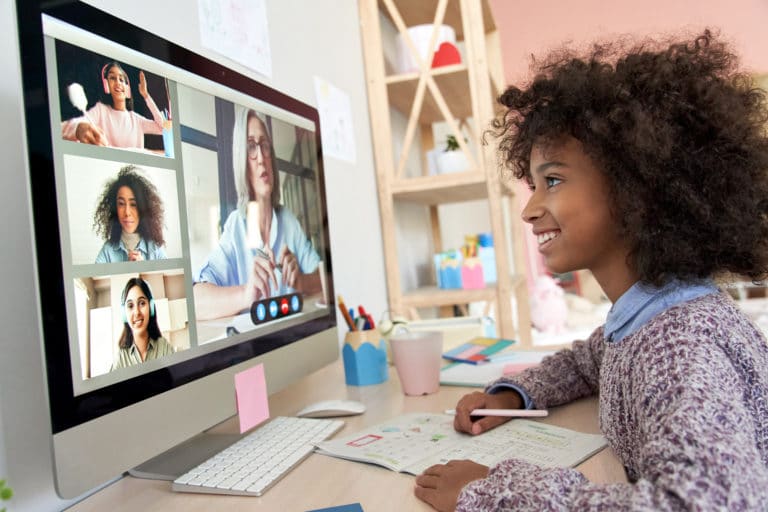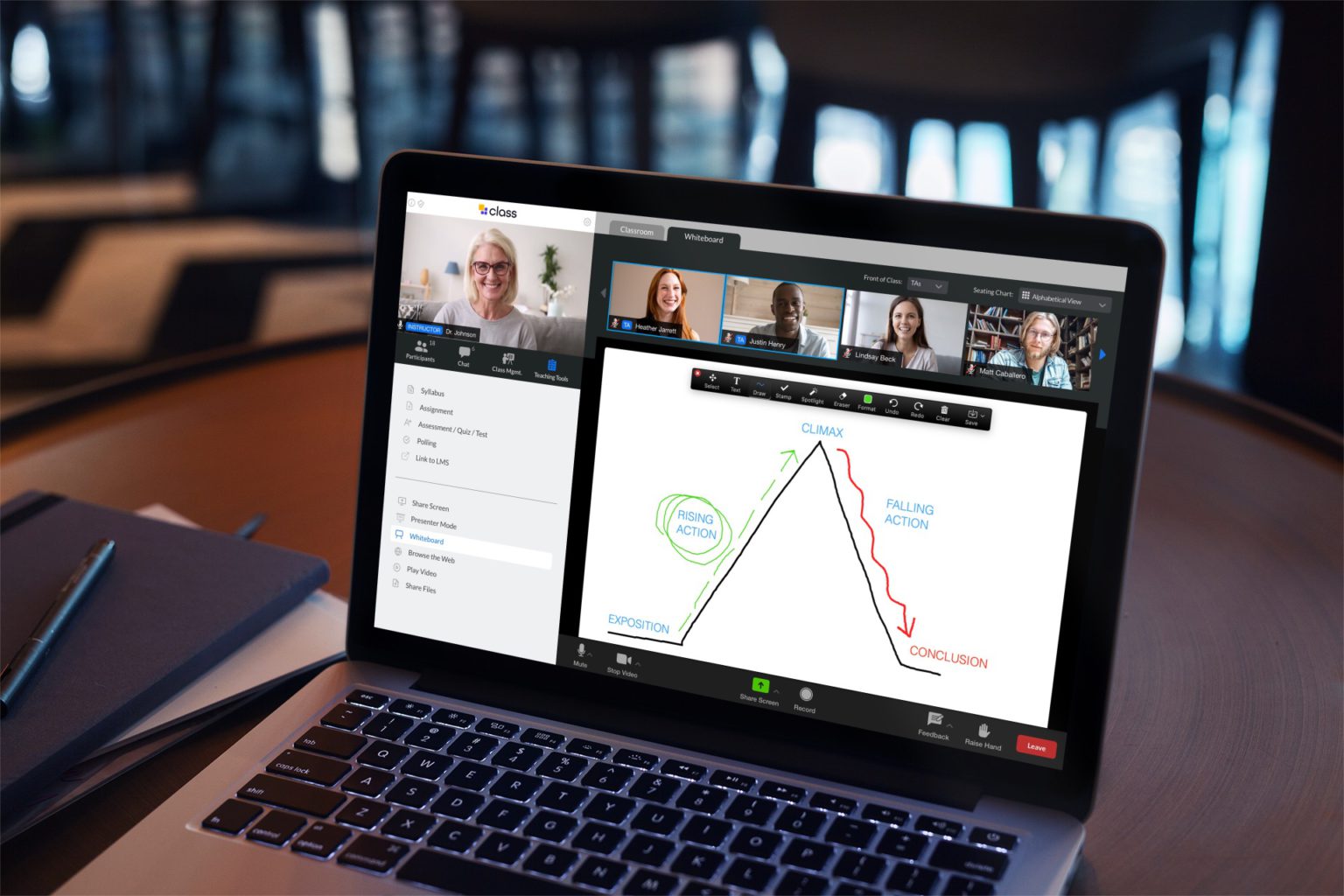
Class is the next generation virtual classroom for K-12, higher education, government agencies, and the workplace. Contact us today to schedule your live demo and see Class in action.

Class is the next generation virtual classroom for K-12, higher education, government agencies, and the workplace. Contact us today to schedule your live demo and see Class in action.

Harvard professor Clayton Christensen was an early proponent of blended learning strategies which the Christensen Institute defines as “leveraging the Internet to afford each student a more personalized learning experience, including increased student control over the time, place, path, and/or pace of learning.”
While some schools had contemplated the idea of blended learning strategies, even dabbled with the concept, prior to the pandemic this was occurring primarily in higher levels of education and far less so in K-12 classrooms. Suddenly, though, the intriguing concept of blended learning classrooms has become an essential pivot for virtually every K-12 school around the country.
As they’ve quickly shifted their teaching strategies to address the impacts of COVID-19, school systems have quickly adopted blending learning strategies as a way to continue providing students with the education they need. School systems are using a wide range of blended learning strategies—some that were in use prior to the pandemic and some that have newly emerged.
The concept of blended learning itself isn’t new; for many districts, though, the application of blended learning models is.
Debi Crimmins, senior vice president of customer advocacy at Achieve3000, has been excited to see blended learning models suddenly be adopted around the country as school systems seek ways to continue to reach students who are in some combination of remote and in-person settings. She says: “The education world heard a great flurry of research about the eventual progression that schools would make toward blended learning way back in the early 2000s.” COVID-19 moved the eventual to the immediate.
Today, Crimmins says, the use of Zoom in the classroom “could be the tipping point to put the theory of blended learning made popular by Christensen almost 20 years ago into quick action, a way to place technology at the forefront for redefining how traditional instruction has occurred in a classroom.” Over the past several months the eventuality of blended learning has become a reality in classrooms across the country.

Anne-Marie Emanuelli is a semi-retired teacher who is currently supporting teachers and students during the pandemic. Before retiring last year Emanuelli spent eight years working at a charter school that had an educational model based on delivering blended learning curriculums to grades 5-12 through online and live classrooms. The school schedule is alternated between middle school and high school, each attending school two days a week where live classes are taught in a variety of subjects during the regular school year, she says. On their “off days” students have an opportunity to sign up for additional live STEAM classes. An online curriculum is available to students 24/7 offering the freedom to schedule their time accordingly.
That blended learning model, already in place prior to the pandemic, says Emanuelli, was a big boon to the school, teachers, and students. “From March to May our staff of teachers were able to engage students flexibly using programs that were already in place as well as to access new platforms and programs,” she says. “Everyone stepped up and we got through the first few months fairly well.”
Blended learning models adopted by schools like these can serve as best practice examples and opportunities for insight about what has worked for others, and what barriers they have overcome. As more schools gain experience with the blended learning classroom, new opportunities for innovation and learning are likely to emerge.
What blended learning model will work best for your school? The answer really depends on a variety of factors including the type of coursework, grade level, access to technology, and, prior to the pandemic, teacher interest. Interest suddenly became a necessity, of course. Fortunately, there are plenty of models to choose from allowing for a great deal of flexibility and experimentation. Wiley’s Advancement Courses offers some insights here along with a flowchart that can serve as an aid in conversations about what blended learning in your school district might look like for the long term.
Blended learning strategies offer an opportunity to be creative and flexible in delivering information and education to students, not only now but long after the virus threat has passed.
Martin McKay is the founder and CEO of edtech company Texthelp. McKay has seen many COVID-19 impacts on education first-hand, not only in his own business but also through his industry partners and customers. One of his key observations has been the normalization of blended learning. “The adoption of technology has also helped to normalize blended learning for students,” he says. “From the perspective of kids who can’t attend school—for example if they’re sick—they can still fully participate in their classes.”
One of the benefits of COVID-19, has been the ability to see “more and more innovation across multiple groups,” says McKay. This includes, he says, edtech companies, districts, schools, teachers, and even parents. “These groups are looking for new ways to give students the best chance to learn.”
Crimmins agrees. What we’re learning now about blended learning in application on a massive scale, she says, “could prepare students for the real world where a combination of technology-driven collaboration couples with onsite professional environments.” Zoom, she says, has the potential to redefine school “from not just being a physical building, but to a learning experience—an opportunity to collaborate, engage, and apply content throughout multiple learning experiences.”
Class, of course, builds on that foundation to offer the functionality to make a seamless transition from live to digital learning, providing teachers and tools with the methods and tools needed to replicate real-world experiences in a digital environment.

Class is the next generation virtual classroom for K-12, higher education, government agencies, and the workplace. Contact us today to schedule your live demo and see Class in action.

Class is the next generation virtual classroom for K-12, higher education, government agencies, and the workplace. Contact us today to schedule your live demo and see Class in action.
Get our insights, tips, and best practices delivered to your inbox

Sign up for a product demo today to learn how Class’s virtual classroom powers digital transformation at your organization.

Features
Products
Integrations